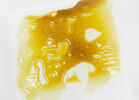
With so much hype about Kratom, one can’t help but wonder what it’s all about. The herbal product has become a go-to remedy for people who prefer natural or organic supplements to better their well-being. Here’s a quick overview of Kratom.
What is Kratom?
Kratom is a natural herbal supplement that comes from a tree in Southeast Asia called Mitragyna speciosa. The tree’s leaves have psychoactive effects. Kratom is also known as Biak, Kakuam, Ketum, Thang and Thom.

How to Grow Kratom
Native to the tropics, the trees grow exceptionally tall in their natural habitat. If you plan to grow it in cooler climates, you need to ensure its protected from the cold. Plant it in a five-gallon pot so you can move it around. Treat the tree like a houseplant. Put it outside during the summer and spring. As winter approaches, bring it inside so the cold weather won’t stunt its growth.
Kratom is somewhat challenging to cultivate. Start by placing five to 10 seeds in the soil (to improve the chances of getting any viable seedlings) or use cuttings and try out their different success rates.
The leaves are crushed to form a powder; either smoke them or brew like a tea. If you don’t like the tangy taste, insert the powder in capsules instead and swallow them.
What Is Kratom Used For?
Kratom improves peoples’ wellness. In the ancient times, it minimized fever and acted as an analgesic. Currently, Kratom is used primarily as an alternative for chronic pain and for opioid withdrawal self-therapy. It contains potent alkaloids that counteract the effects of opioids. Some use it to boost stamina and endurance. Maeng da Kratom, a hybrid tree from Indonesia, is an excellent source.
Where to Buy Kratom
You can’t be too careful when buying any product labeled organic and natural. However, an informed buyer will note the difference. Buy lab-tested Kratom products from legitimate and verified websites. Be sure to take the right dosage.
Unapproved in the U.S., the DEA lists Kratom as a “drug of concern.” Before purchasing Kratom products, consult with your physician.






